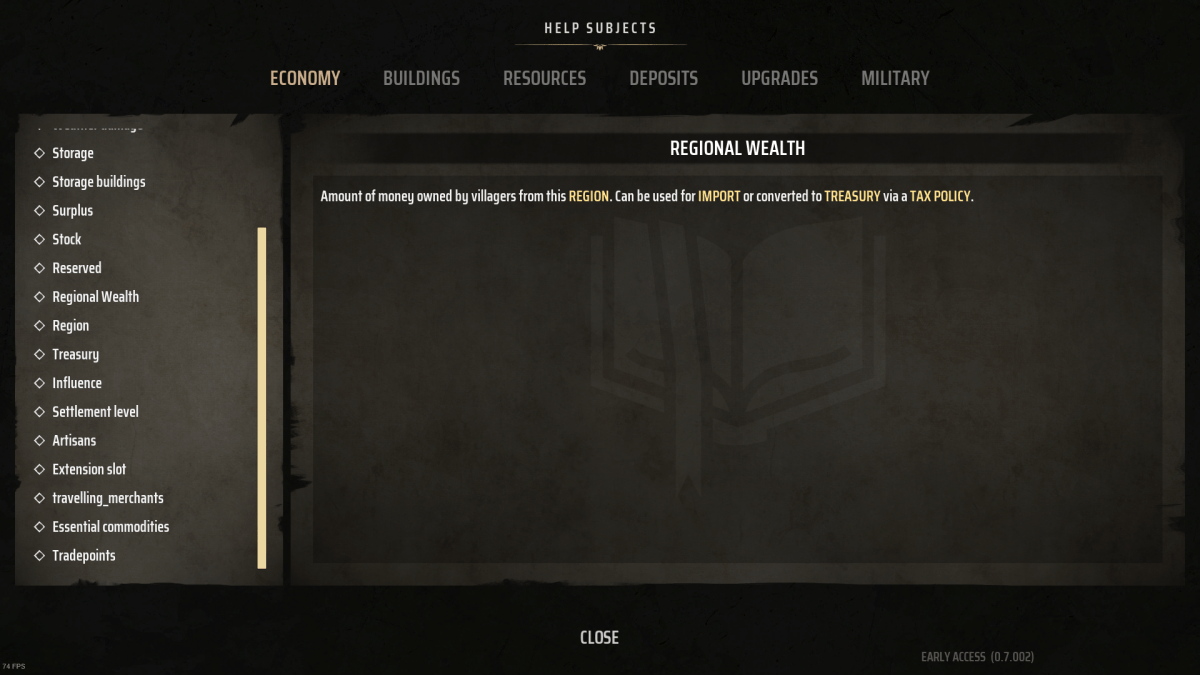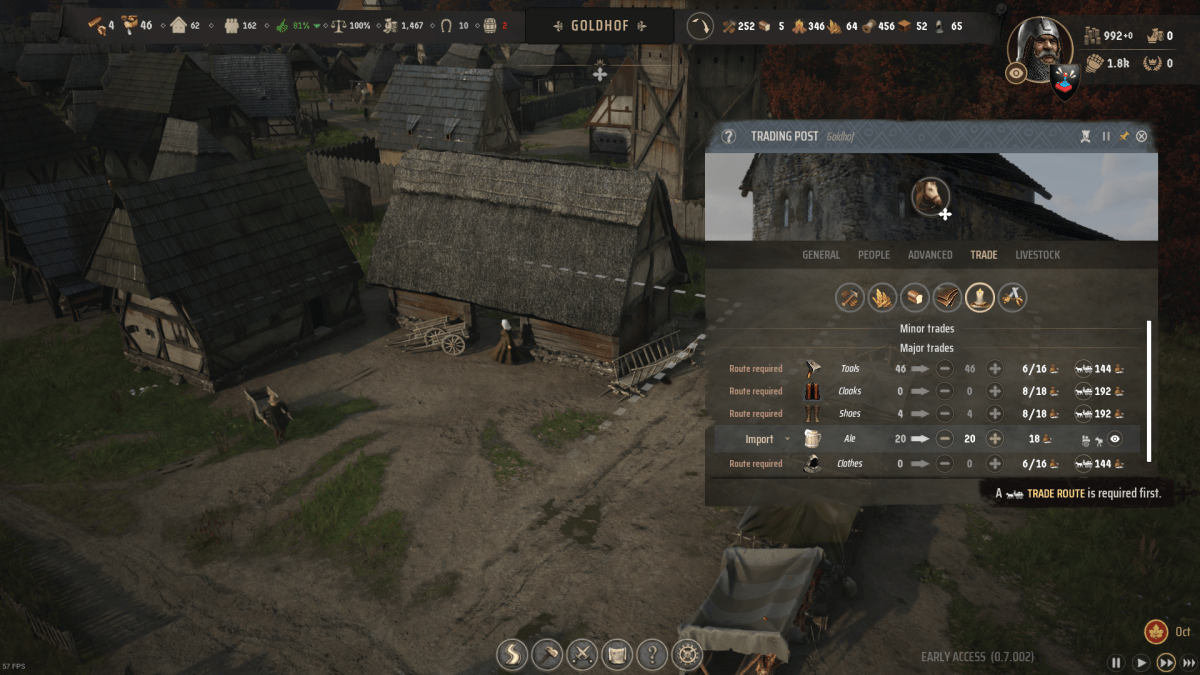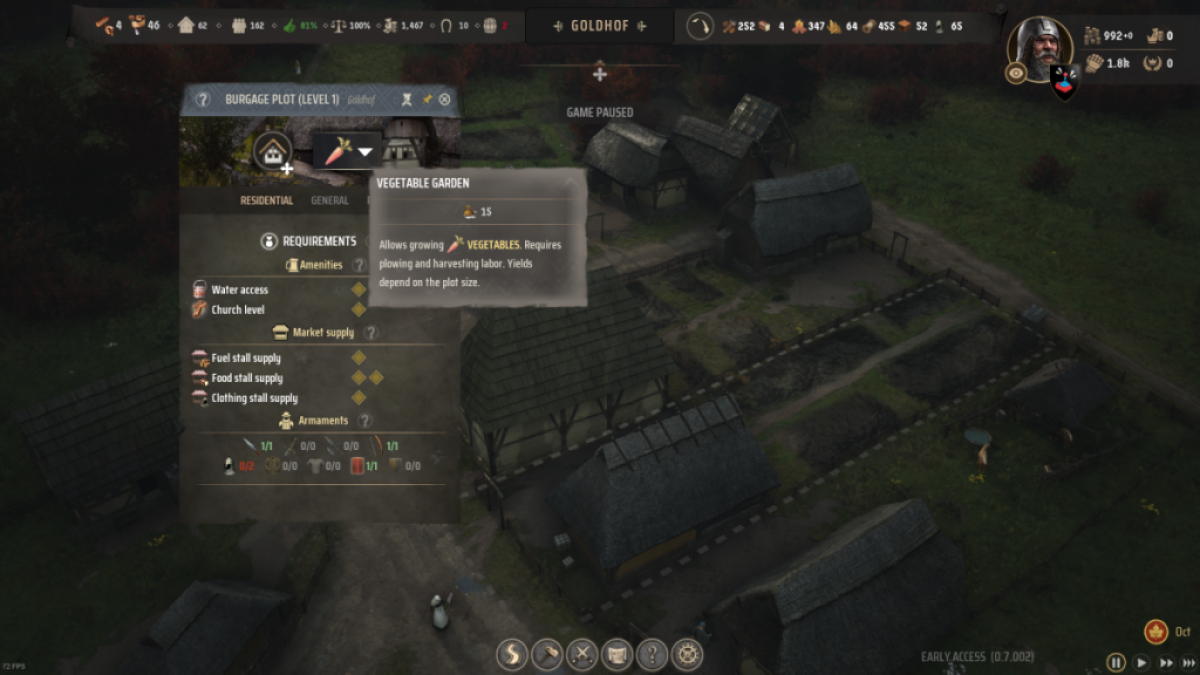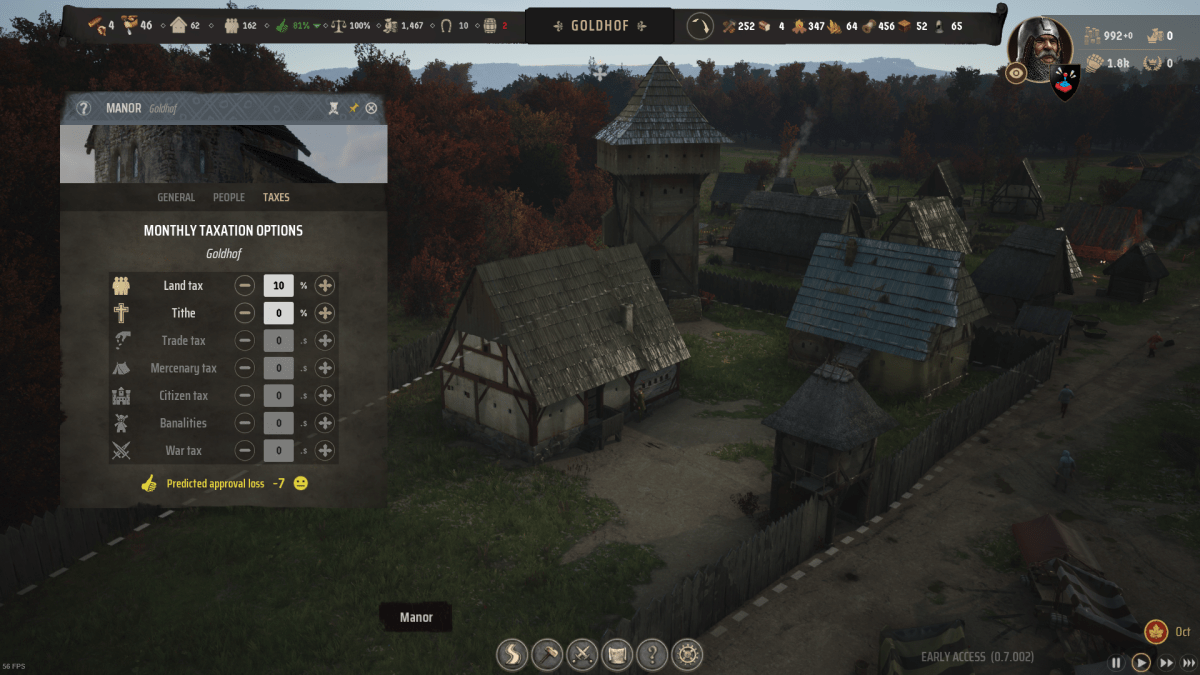Regional Wealth can be a pivotal resource in Manor Lords, allowing you to build workshops or gardens in houses or import resources to your village. But first, you’ll need to acquire some, so here’s how to get and use Regional Wealth in Manor Lords.
What is Regional Wealth in Manor Lords?
In Manor Lords, money is split into Regional Wealth, which is essentially your peasant’s collective funds, and your Treasury, which is your personal capital as the local lord. You can use Regional Wealth for a variety of things, like importing goods from a Trading Post or upgrading Burgage Plots with Workshops to produce artisan goods. It is, like the name implies, tied to each region, so you can’t spend wealth from one region to upgrade another directly.

How to get Regional Wealth in Manor Lords
There are a couple of ways to gain Regional Wealth, the main one being via trade. Once you’ve constructed a Trading Post in your village, you will be able to staff it with villagers and use it to sell goods to passing traders. You can do this by selecting the building and going to the trade tab, then finding the resource you have in mind and selecting to export it. You can then set the minimum surplus for the resource, which is how many units you want to keep in reserve. A useful option to make sure you don’t accidentally sell off all your food instead of just the excess.
You can see how many units of Regional Wealth you’ll gain from each item, and you will have the option to pay for a fixed trade route so you can sell or buy more often. More advanced goods usually sell for more than basic resources; for example, roof tiles will fetch you more than raw clay, but they also often require you to establish that trade route to buy or sell any at all. If you’re just starting out, it may be worthwhile to hock some basic resources to build up some wealth before you’re ready to invest in trading refined goods.

The second way to gain Regional Wealth is by upgrading Burgage Plots, which are your houses. Level 2 plots will generate 1 regional wealth per family living in them, and level 3 plots provide 2 wealth per family, but level 1 plots don’t provide any. Increasing a plot’s level will also add more space for families and make more types of workshop extensions available, providing the plot is big enough to house one. To upgrade, you’ll need to satisfy the household’s current amenities requirements, gather the construction materials, and then select the upgrade button on the plot’s tab to send your builders to actually do the job.
Finally, you can also gain Regional Wealth by clearing bandit camps. These appear periodically according to your scenario settings and require a militia force to defeat the bandits inhabiting it. Once cleared, you can order your soldiers to the camp to clear it and either send its bounty to the closest region’s coffers or to your own treasury. If you have an excess of treasury but a lack of regional funds, consider hiring mercenaries to clear camps for you! That will stop thieves from stealing your resources without taking your serfs away from their busy jobs.

How to Use Regional Wealth in Manor Lords
Once you’ve amassed some capital, you can re-invest it into your village. Burgage Plots that are large enough will be able to have workshops built in them, which is identified by the hammer under a roof symbol while plotting the building. Level 1 Burgage Plots can only add things like gardens or goat pens, which offer a useful source of food and hides, but level 2 and higher plots can have goods workshops installed to turn the family into artisans. These workshops include blacksmiths, joiners, and tailors and will lock the family into that specific job, so make sure you’re happy with your selection, as you won’t be able to reassign them.
You’ll also need to make sure to keep them supplied with the required materials so they can actually produce anything. Another way to spend your Regional Wealth is through yet more trading. If you happen to start in an area without a good supply of certain resources, you can trade what you do have abundantly for what you lack. This is done the same way you export your goods but select import instead. Set your desired surplus, and your traders will attempt to buy goods until you reach that amount.
If your village lacks good food sources nearby, trading may become a necessity. Thankfully a development point can be spent to get cheap bread and firewood carts for your marketplace that can provide essentials to your villagers for slightly cheaper. They can still become a drain on your finances if you aren’t careful, however, and don’t forget that development point could be spent elsewhere too.

Finally, the last way to spend your regional wealth is to tax it away from your hard-working serfs to fill your own coffers. This isn’t just a choice for role-playing the Sheriff of Nottingham, however, as your Treasury can be used to hire mercenaries to protect your villages, upgrade your personal retinue of warriors, or provide extra supplies when settling new regions.
To adjust taxes, you will need to construct your Manor House, from where you can select what tax rate you want to impose. Bear in mind, however, that even low taxes will incur negative approval, so consider raising them only when you aren’t looking to attract new villagers to a region, as approval affects your growth rate.
Manor Lords will released in Early Access on April 26, 2024, for PC via Steam, GOG, and the Microsoft Store as well as on Xbox Game Pass for PC. An Xbox console version is also planned.


Published: Apr 24, 2024 07:45 pm